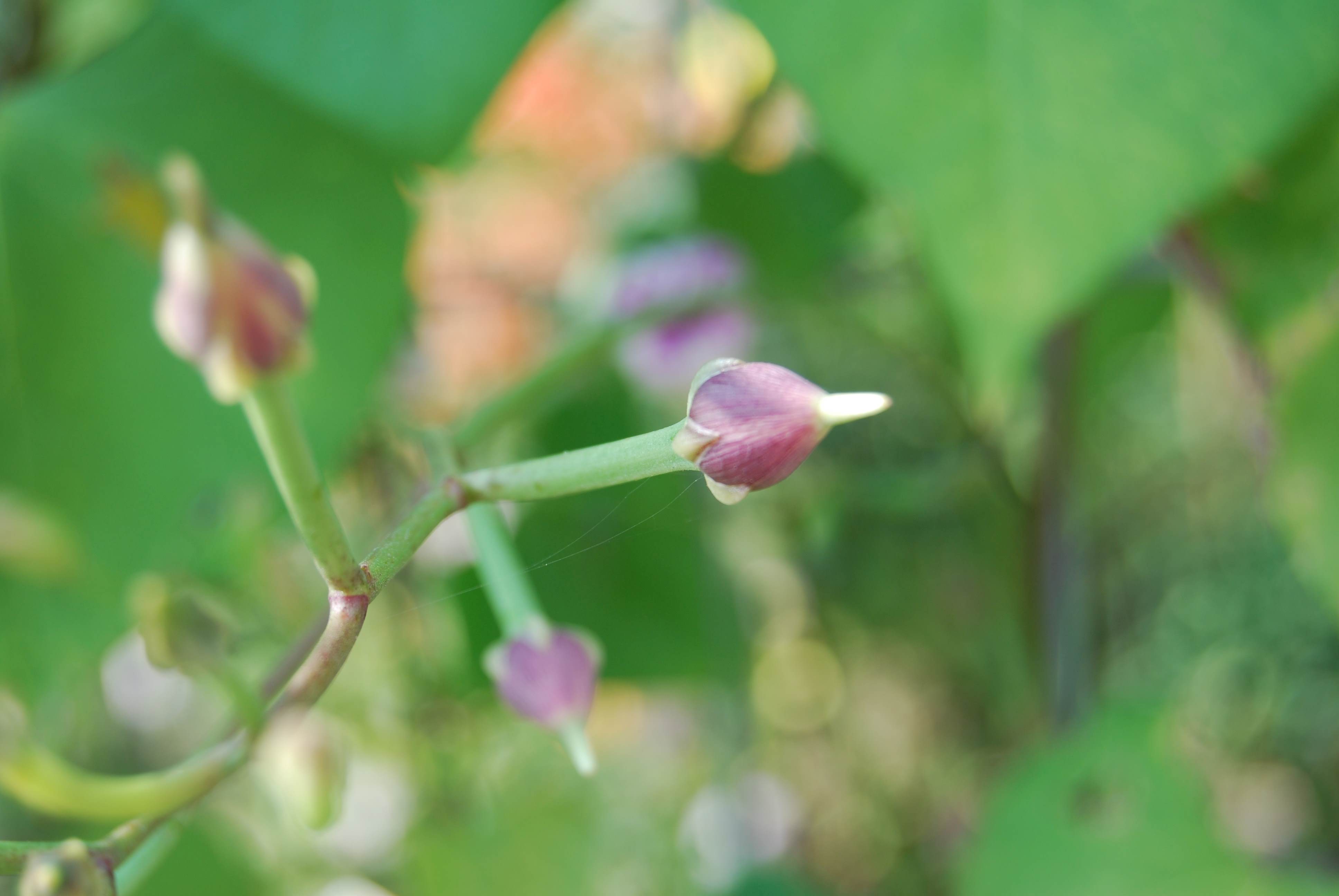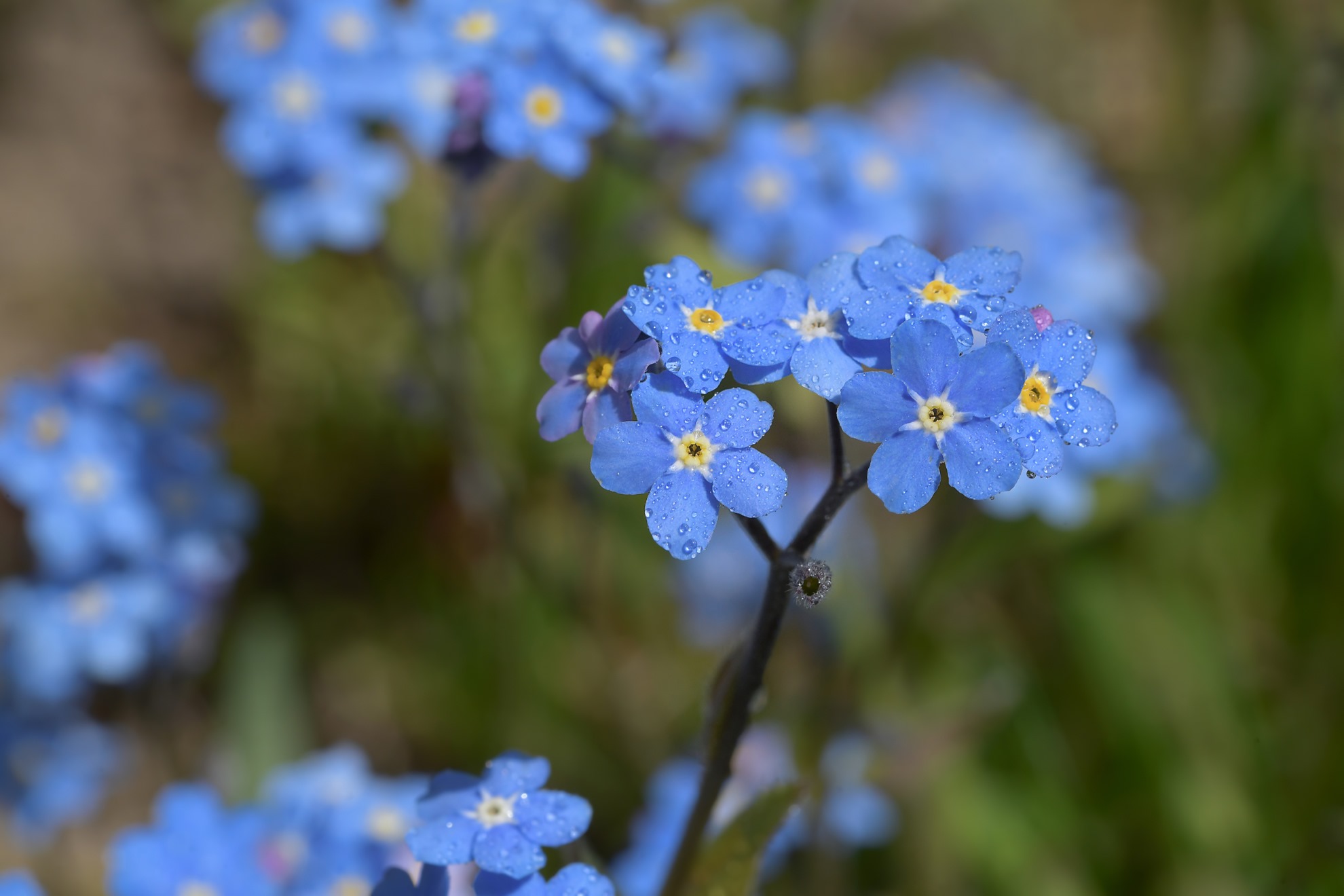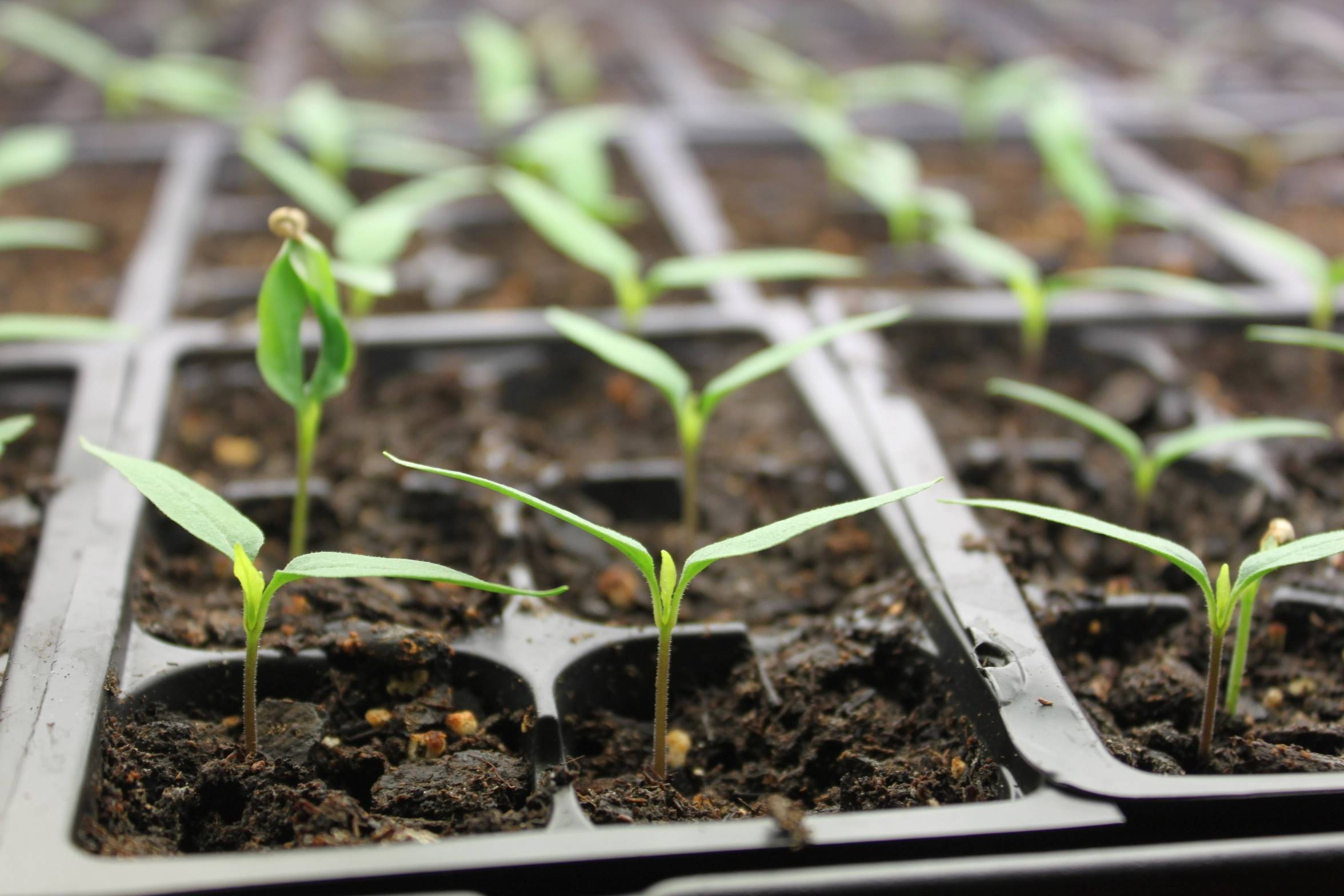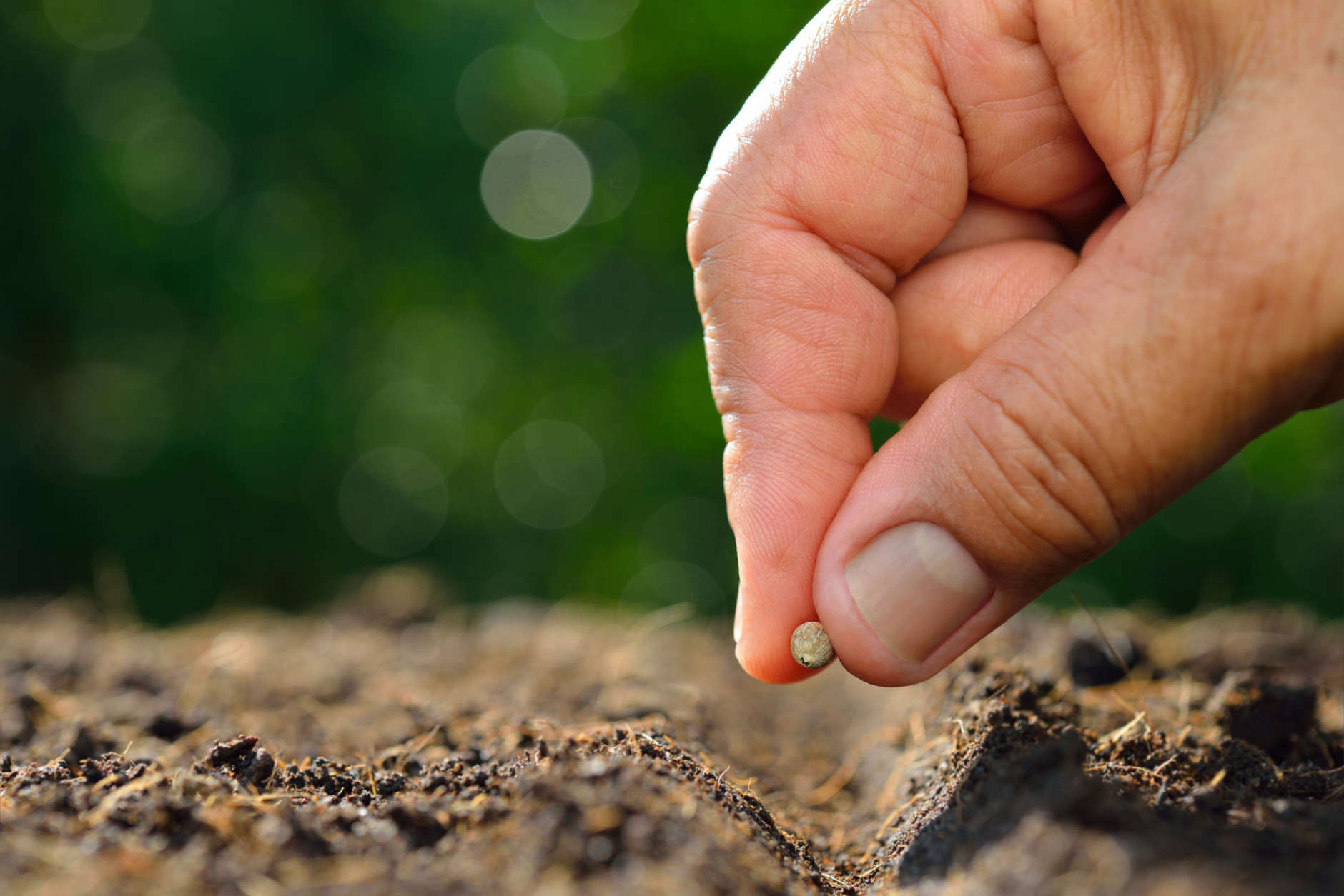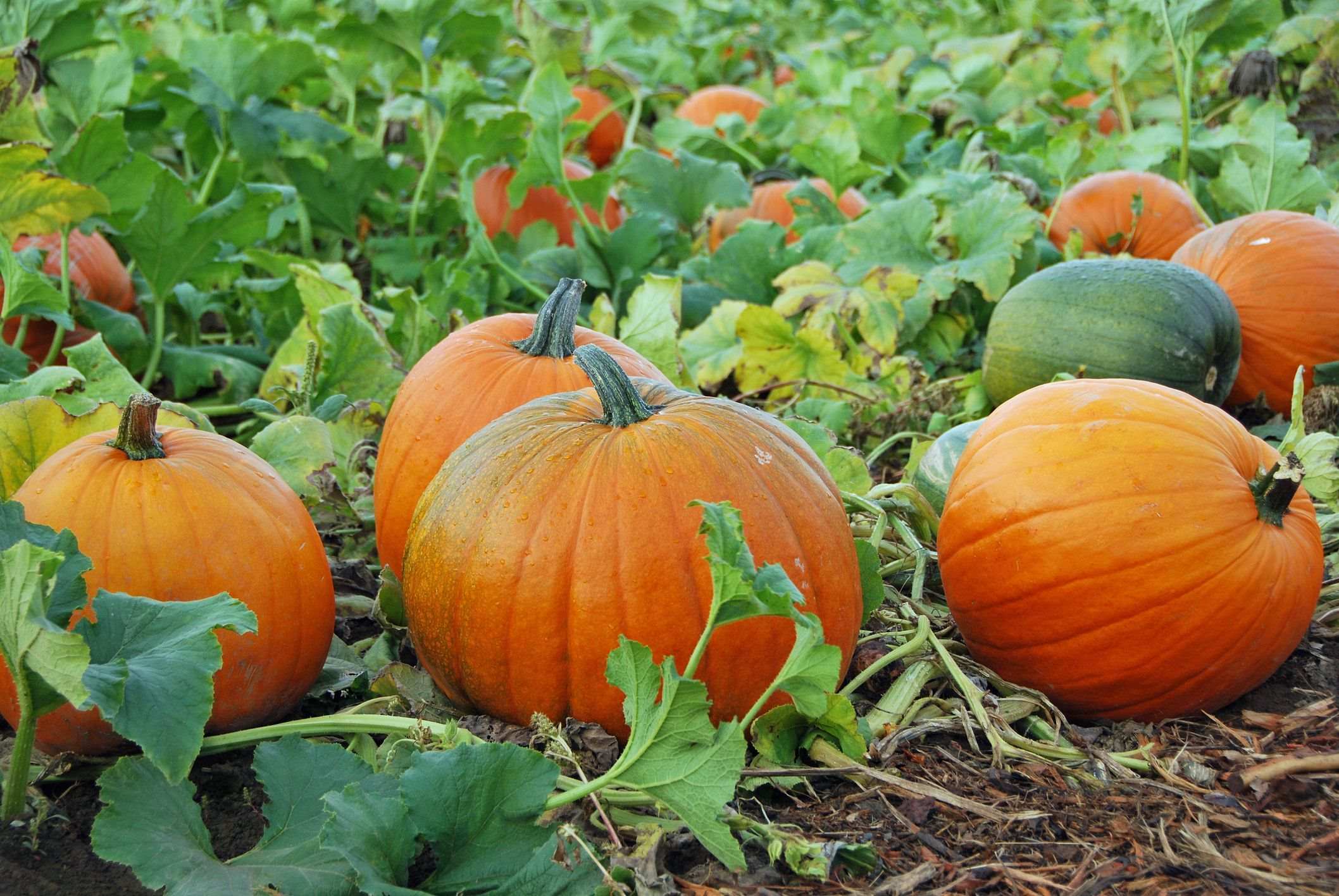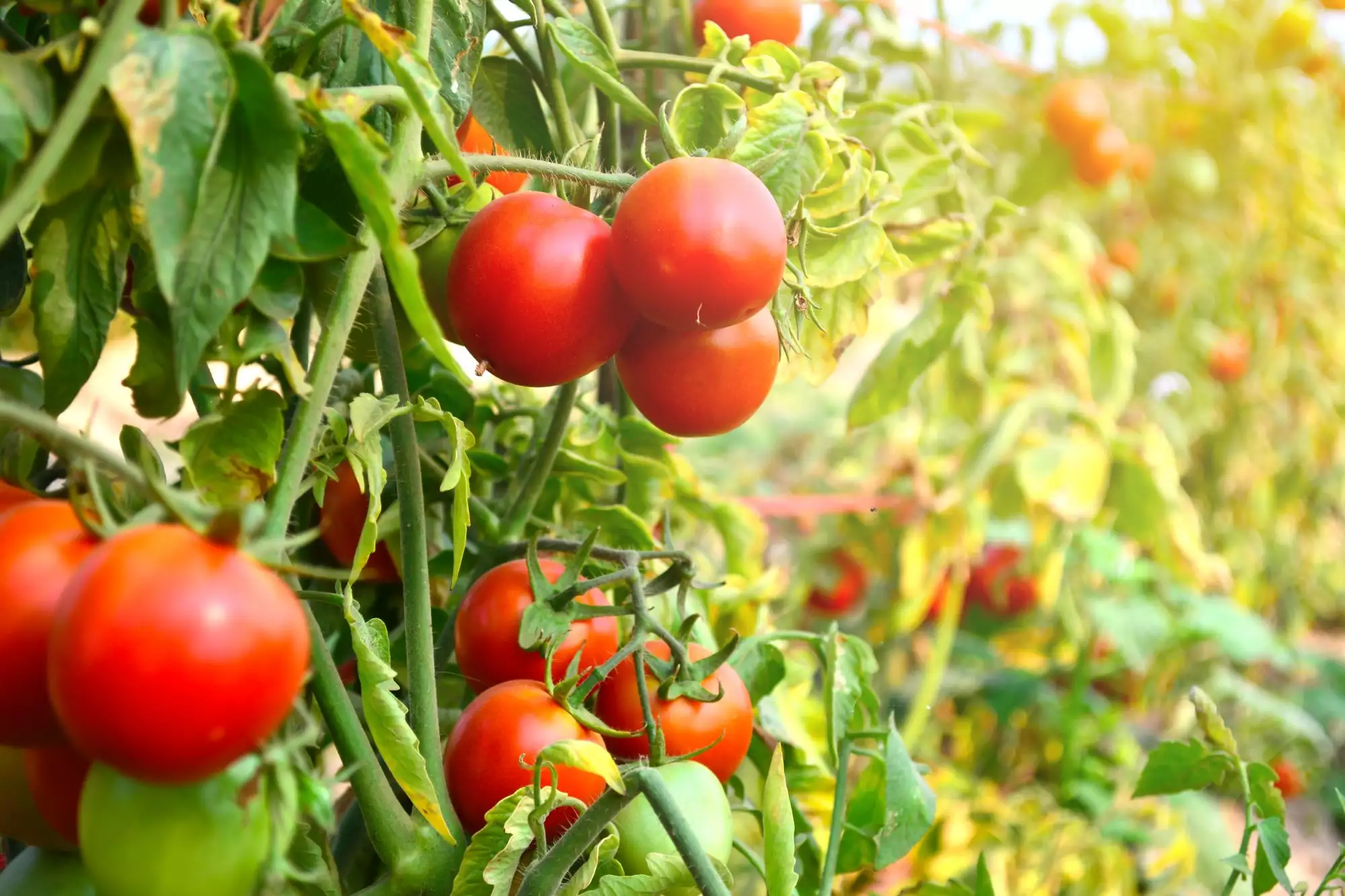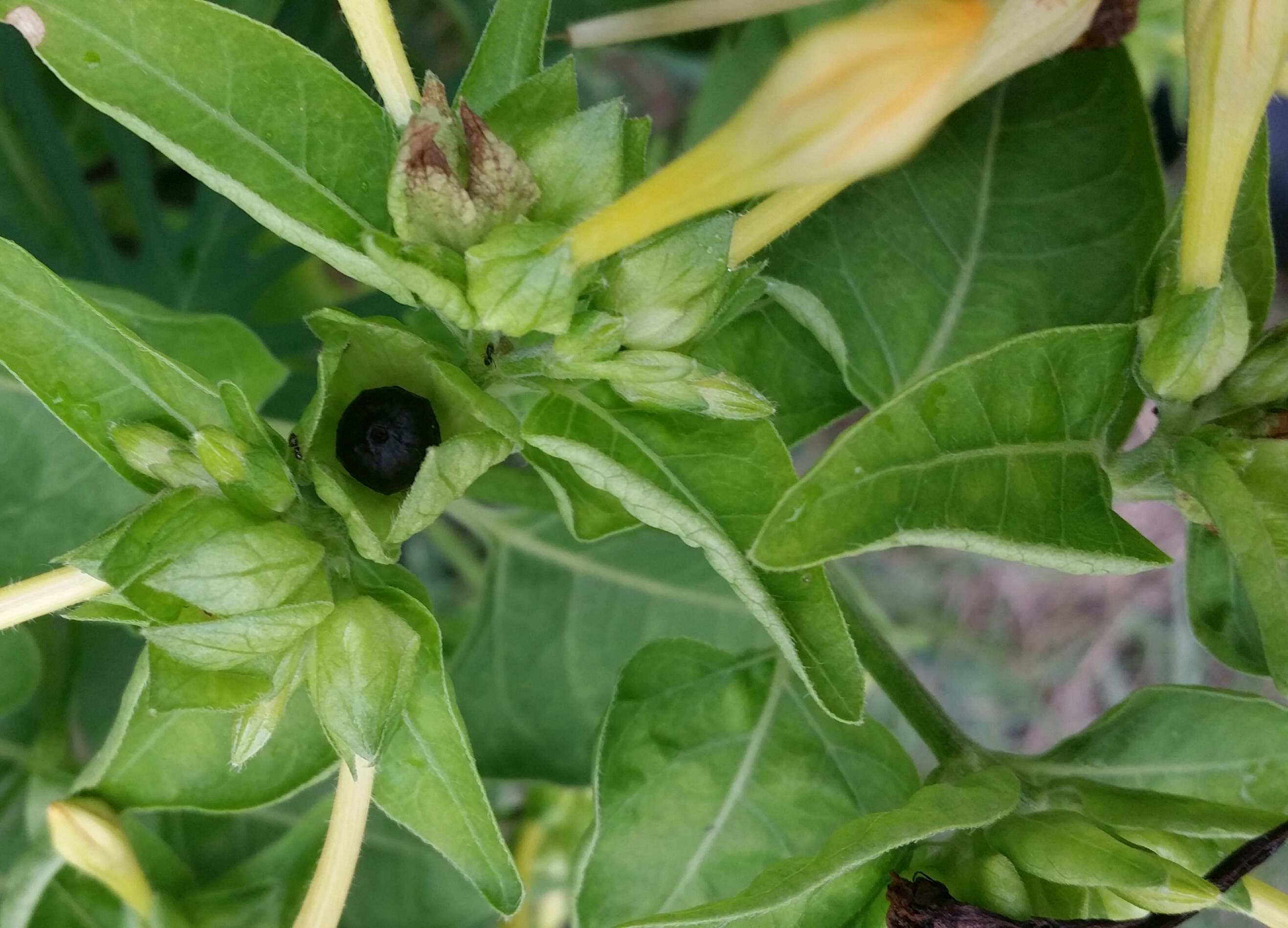Home>Gardening Techniques>Seasonal Gardening>When To Plant Cosmos Seeds
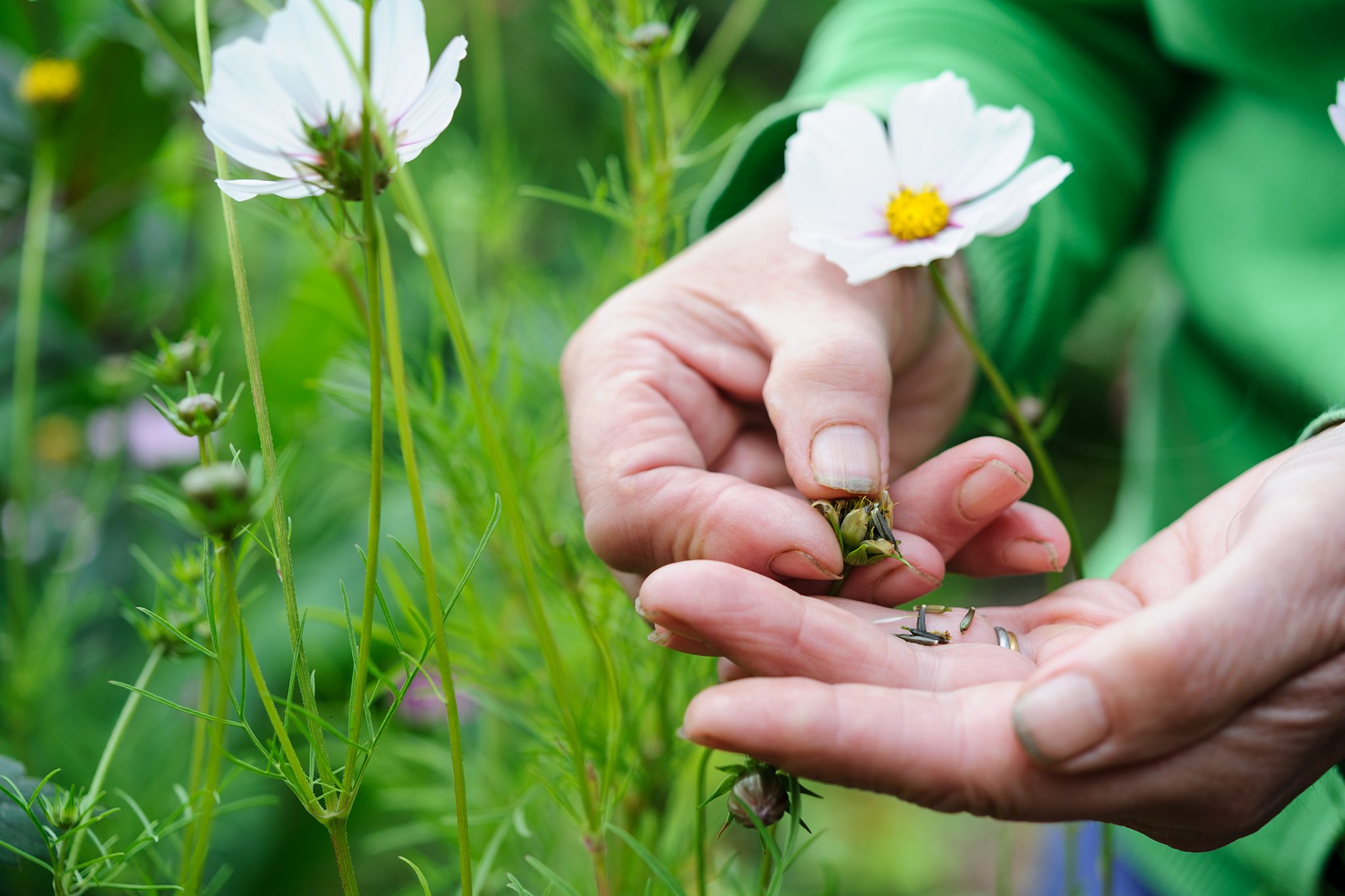

Seasonal Gardening
When To Plant Cosmos Seeds
Modified: January 22, 2024
Discover the best time to plant cosmos seeds with our seasonal gardening guide. Start growing beautiful cosmos flowers in your garden today.
(Many of the links in this article redirect to a specific reviewed product. Your purchase of these products through affiliate links helps to generate commission for Chicagolandgardening.com, at no extra cost. Learn more)
Table of Contents
Introduction
Welcome to the world of cosmos seeds! If you’re a gardening enthusiast looking to add vibrant beauty to your landscape, planting cosmos seeds is a fantastic choice. Cosmos flowers, with their delicate petals and striking colors, are a favorite among gardeners for adding a touch of elegance to any space.
In this article, we will explore the ins and outs of planting cosmos seeds, including the best time to sow them, essential planting techniques, and tips for caring for your cosmos seedlings. By the end, you’ll have all the knowledge you need to successfully grow these stunning flowers and fill your garden with their vibrant blooms.
But before we dive into the details, let’s take a moment to understand what cosmos seeds are and why they are a popular choice among gardeners.
Cosmos seeds, scientifically known as Cosmos bipinnatus, are annual flowers native to Mexico. They are a member of the Asteraceae family and are often referred to as Mexican aster or cosmos flower. This versatile plant can grow between 3 to 6 feet tall, with feathery foliage and daisy-like flowers in shades of pink, white, purple, and orange.
One of the main reasons gardeners love cosmos seeds is their incredible resilience and adaptability. They can thrive in various types of soil, tolerate different weather conditions, and attract pollinators such as butterflies and bees. Plus, they make excellent cut flowers, bringing beauty indoors for floral arrangements.
Now that you have a basic understanding of cosmos seeds, it’s time to learn when the best time is to plant them. The timing can vary depending on various factors such as your location, climate, and personal preferences. So, let’s delve into the next section to discover the ideal planting time for cosmos seeds.
Understanding Cosmos Seeds
Before you start planting cosmos seeds, it’s important to have a good understanding of these beautiful flowers and their unique characteristics. Cosmos seeds are small, oval-shaped structures that contain the genetic material necessary for the growth of the cosmos plant. They serve as the starting point for cultivating these stunning flowers in your garden.
The seeds of cosmos flowers come in different varieties, each offering distinct colors and sizes. Some popular cosmos seed varieties include Sonata Mix, Sensation Mix, and White Seashells. These seeds can be purchased from local nurseries, garden centers, or online seed suppliers.
One great advantage of cosmos seeds is their ability to germinate quickly and easily. You can sow the seeds directly in your garden or start them indoors a few weeks before the planting season. Regardless of the method you choose, cosmos seeds generally have a high germination rate, making it relatively easy to achieve successful growth.
When it comes to storage, cosmos seeds have a decent shelf life if stored properly. It’s advisable to keep them in a cool, dry place, away from direct sunlight or extreme temperature fluctuations. This will ensure the longevity of the seeds and maintain their viability for future use.
Another fascinating aspect of cosmos seeds is their ability to self-sow. This means that once the plants mature and produce seeds, they will naturally drop onto the soil, germinating on their own in the following seasons. This self-sowing behavior allows cosmos flowers to spread and colonize new areas, creating a beautiful display of blooms year after year.
Lastly, it’s worth noting that cosmos seeds are not only beautiful but also beneficial for the environment. The flowers attract essential pollinators such as bees, butterflies, and hummingbirds. These pollinators play a critical role in the reproduction of various plants and contribute to maintaining a healthy ecosystem in your garden.
Now that you have a better understanding of cosmos seeds, including their varieties, germination characteristics, and environmental benefits, you’re ready to explore the optimal time to sow them. Continue reading the next section to learn about the best planting window for cosmos seeds.
Choosing the Right Time to Plant
When it comes to planting cosmos seeds, timing is crucial for ensuring successful growth and abundant blooms. While cosmos is a relatively hardy plant that can tolerate a wide range of conditions, it’s important to choose the right time to sow the seeds to maximize their potential.
The ideal time to plant cosmos seeds depends on your location and the specific climatic conditions in your area. Generally, cosmos seeds are sown in the spring after the last frost date in colder regions. This allows the seeds to germinate and establish themselves during the warmer months, leading to strong and healthy growth.
If you live in a warmer climate with mild winters, you have the option of sowing cosmos seeds in the fall. This allows the seeds to benefit from the cooler temperatures and establish a strong root system before the arrival of hot summer weather.
It’s important to note that cosmos seeds can tolerate some light frost, but extended exposure to freezing temperatures can damage or kill the young plants. Therefore, it’s crucial to time your planting according to the average frost dates in your area to avoid any potential setbacks.
In addition to temperature considerations, you may also want to take into account the length of the growing season in your region. Cosmos flowers typically take around 70 to 90 days to bloom after germination. Therefore, if you have a shorter growing season, you may want to start the seeds indoors a few weeks before the last frost to give them a head start.
By starting cosmos seeds indoors, you can control the environment and provide optimal growing conditions, such as consistent warmth and moisture. This method can help you extend the growing season and ensure a bountiful display of cosmos flowers in your garden.
Overall, the right time to plant cosmos seeds is when the threat of frost has passed, and the soil temperature is consistently around 50 to 60°F (10 to 15°C). By choosing the optimal planting time based on your specific location and climate, you set the stage for successful seed germination and robust growth.
Now that you understand the importance of timing, let’s explore the factors you need to consider when preparing the soil for planting cosmos seeds.
Factors to Consider
Before planting cosmos seeds, there are several important factors to consider that can greatly impact the success of your garden. By taking these factors into account, you can create an ideal environment for your cosmos plants to thrive and flourish.
1. Location: Cosmos plants prefer full sun exposure, so it’s essential to choose a planting location that receives at least 6 to 8 hours of direct sunlight daily. Ensure the area has well-draining soil to prevent waterlogged conditions, as cosmos plants do not tolerate excessive moisture.
2. Soil Quality: Cosmos plants can adapt to various soil types, but they thrive in well-drained, moderately fertile soil with a pH level between 6 and 7. Before planting, amend the soil with organic matter such as compost or well-rotted manure to enhance its fertility and drainage capabilities.
3. Spacing: Cosmos plants can grow quite large, so it’s important to provide adequate spacing between each plant. Space them at least 12 to 24 inches apart, depending on the variety, to allow for proper air circulation and prevent overcrowding.
4. Watering: While cosmos plants are relatively drought-tolerant, they still require regular watering, especially during dry spells or prolonged periods of heat. Water deeply to encourage strong root development, but avoid overwatering, as it can lead to root rot and other issues.
5. Weeding: Keep the area around your cosmos plants weed-free to minimize competition for nutrients and resources. Regularly remove any weeds that may sprout to ensure optimal growth and minimize the chances of pests and diseases.
6. Fertilization: Cosmos plants generally do not require heavy fertilization, especially if the soil has been amended with organic matter beforehand. However, a light application of balanced fertilizer once or twice during the growing season can provide additional nutrients for healthy growth.
7. Pest and Disease Control: While cosmos plants are relatively resistant to pests and diseases, they can still be susceptible to issues such as aphids, powdery mildew, or leaf spot. Monitor your plants regularly and take necessary measures, such as using organic pest control methods or removing affected leaves, to keep your cosmos plants healthy.
By considering these factors and making appropriate adjustments, you can create an optimal growing environment for your cosmos plants. Now that you have prepared the soil, it’s time to dive into the process of planting cosmos seeds. Read on to learn the step-by-step guide for successful seeding.
Preparing the Soil for Planting
Preparing the soil is a crucial step in ensuring the success of your cosmos plants. By taking the time to properly prepare the soil, you provide a nutritious and well-drained environment for the seeds to germinate and the plants to flourish. Here are some steps to follow when preparing the soil for planting cosmos seeds:
- Clear the Area: Start by clearing the planting area of any weeds, rocks, or debris. It’s important to have a clean and clear space for the cosmos plants to grow without any competition for nutrients.
- Loosen the Soil: Use a garden fork or a tiller to loosen the soil to a depth of 8 to 12 inches. This helps improve drainage and allows the roots to penetrate the soil easily.
- Amend the Soil: If your soil lacks organic matter or has poor fertility, amend it with compost, well-rotted manure, or a balanced organic fertilizer. This will enrich the soil, improve its structure, and provide essential nutrients for the cosmos plants.
- Test the Soil pH: Check the pH level of your soil using a soil testing kit or by sending a sample to a local agricultural extension service. Most cosmos plants prefer a slightly acidic to neutral pH level between 6 and 7. If necessary, adjust the pH using appropriate soil amendments.
- Smooth and Level the Soil: After amending the soil, rake the area to create a smooth and level surface. This will make it easier to sow the cosmos seeds evenly and provide consistent moisture for germination.
- Consider Raised Beds: If your soil is heavy or poorly drained, consider creating raised beds for your cosmos plants. Raised beds provide better drainage, prevent waterlogged conditions, and promote healthier root development.
By following these steps, you can ensure that your cosmos plants have the best possible start in the well-prepared soil. Now that your soil is ready, it’s time to move on to the exciting part – planting the cosmos seeds!
Planting Cosmos Seeds
Now that you have prepared the soil, it’s time to sow your cosmos seeds and kickstart their journey towards vibrant blooms. Planting cosmos seeds is a relatively straightforward process, and following a few key steps will set you up for success. Here’s a step-by-step guide on how to plant cosmos seeds:
- Choose the Method: Decide whether you want to sow the cosmos seeds directly into the garden or start them indoors. Direct sowing is recommended if your region has a long growing season and the soil temperature is consistently above 50°F (10°C). Starting indoors can be advantageous if you want to extend the growing season or have a shorter growing season.
- Prepare the Seedbed: If you opt for direct sowing, create furrows or dig small holes in the soil. Space them according to the recommended spacing for your cosmos variety, typically about 12 to 24 inches apart.
- Sow the Seeds: Place the cosmos seeds in the furrows or holes, spacing them evenly. It’s best to plant them at a depth of about 1/4 inch to 1/2 inch. If starting indoors, sow the seeds in seed trays or pots filled with quality seed-starting mix.
- Water Gently: After planting, water the soil gently to ensure the seeds make good contact with the soil. Avoid over-watering, as this can dislodge the seeds or create waterlogged conditions.
- Provide Proper Care: Whether sown indoors or outdoors, ensure that the soil remains consistently moist but not soaked. Keep the seedbed or pots in a warm and bright location. Seeds should typically germinate within 7 to 14 days, depending on the conditions.
- Thin the Seedlings (Optional): If you notice too many seedlings emerging in a single spot, thin them out by carefully removing the weaker seedlings. This allows the remaining plants to have adequate space and resources to grow strong.
That’s it! With these simple steps, you have successfully planted cosmos seeds. Now all that’s left is to provide the necessary care and watch them grow into beautiful plants. In the next section, we will explore the essential tips for caring for your cosmos seedlings.
Caring for Cosmos Seedlings
Now that your cosmos seedlings have emerged, it’s time to provide them with the care they need to grow into healthy and robust plants. Proper care during this crucial stage will help establish a strong foundation for your cosmos flowers. Here are some essential tips for caring for your cosmos seedlings:
- Watering: Be mindful of watering your cosmos seedlings. Keep the soil evenly moist, but avoid overwatering, as soggy soil can lead to root rot. Water at the base of the plants, aiming to keep the foliage dry to prevent fungal diseases.
- Thinning: If you have multiple seedlings growing closely together, it’s important to thin them to provide adequate space for each plant to grow. Remove the weaker seedlings, leaving the strongest and healthiest ones with proper spacing.
- Mulching: Apply a layer of organic mulch around your cosmos seedlings to help conserve moisture, suppress weed growth, and regulate soil temperature. Avoid placing the mulch too close to the seedlings to prevent stem rot.
- Staking (if needed): Depending on the variety and height of your cosmos plants, you may need to stake them for support. As the plants grow taller, gently tie them to stakes to prevent bending or breaking from strong winds or heavy rain.
- Fertilizing: Cosmos plants generally do not require heavy fertilization. However, you can provide them with a balanced, slow-release fertilizer once or twice during the growing season to promote healthy growth and abundant blooms.
- Pinching (optional): Pinching off the top few inches of the plants when they are around 12 inches tall can help promote bushier growth and encourage the formation of more flower buds. This technique is optional and can be done if you prefer a more compact and fuller plant.
- Deadheading: Regularly remove spent flowers or deadhead your cosmos plants to encourage continuous blooming throughout the season. This also prevents the plants from diverting energy into seed production and promotes more flower production.
- Pest and Disease Control: Cosmos plants are generally resistant to pests and diseases. However, keep an eye out for common garden pests like aphids or caterpillars. If any issues arise, apply organic pest control methods and remove any affected parts promptly.
By following these care tips, you can ensure that your cosmos seedlings thrive and develop into sturdy plants that will reward you with vibrant blooms. Now that your cosmos plants are well taken care of, let’s explore some additional maintenance and growth tips to help them reach their full potential.
Maintenance and Growth Tips
Once your cosmos plant seedlings are established, it’s important to provide ongoing maintenance and care to ensure their healthy growth and abundant blooms. Here are some maintenance and growth tips to help you nurture your cosmos plants:
- Monitor Soil Moisture: Cosmos plants prefer consistently moist soil, so regularly check the moisture level. Water deeply when the top inch of soil feels dry, aiming to keep the soil evenly moist but not waterlogged.
- Protect from Extreme Weather: Strong winds or heavy rain can damage cosmos plants, especially taller varieties. Consider providing support or staking for added stability during harsh weather conditions.
- Support Flowering Stems: As the cosmos plants grow taller and produce flower stems, gently tie them to stakes or use support rings to prevent the stems from snapping or bending under the weight of the blooms.
- Encourage Pollinators: Cosmos flowers are excellent attractors of pollinators such as bees, butterflies, and hummingbirds. Create a pollinator-friendly environment by growing other nectar-rich flowers nearby to maximize garden biodiversity.
- Prune Leggy Growth: If your cosmos plants become leggy and produce fewer flowers, you can prune the stems back to encourage bushier growth. Cut back the long, straggly stems by a third to promote a more compact and balanced appearance.
- Apply Organic Mulch: Maintain a layer of organic mulch around your cosmos plants to conserve moisture, suppress weed growth, and regulate soil temperature. This also helps nourish the soil as the mulch breaks down over time.
- Continue Deadheading: Regularly remove spent flowers throughout the growing season to encourage continuous blooming. This will redirect the plant’s energy into producing more flower buds rather than seed production.
- Observe for Pests and Diseases: While cosmos plants are generally resilient, inspect them regularly for any signs of pests or diseases. Common issues can include aphids, caterpillars, powdery mildew, or leaf spot. Take appropriate measures such as using organic pest control methods or removing affected leaves.
By following these maintenance and growth tips, you can ensure that your cosmos plants stay healthy, vigorous, and continue to grace your garden with their vibrant flowers throughout the season. Now, let’s discuss how to deal with common issues that may arise while growing cosmos plants.
Dealing with Common Issues
While cosmos plants are generally resilient, they may encounter some common issues that can affect their overall health and appearance. By being proactive and knowing how to deal with these issues, you can effectively address problems as they arise and ensure the continued vitality of your cosmos plants. Here are some common issues you may encounter and how to deal with them:
- Aphids: Aphids are small, sap-sucking insects that can infest cosmos plants. To control their population, spray a solution of water and mild soap or use an organic insecticidal soap. Introduce beneficial insects like ladybugs, lacewings, or parasitic wasps, which feed on aphids.
- Caterpillars: Some species of caterpillars may feed on the leaves or buds of cosmos plants. Handpick them off the plants or use organic insecticides specifically formulated for caterpillars. Encouraging natural predators like birds or installing butterfly host plants can help control caterpillars.
- Powdery Mildew: Powdery mildew is a fungal disease that appears as a white, powdery coating on the leaves of plants. To prevent and manage powdery mildew, ensure adequate air circulation, water from below, and remove affected leaves. Apply a fungicidal spray if the infection persists.
- Leaf Spot: Leaf spot manifests as dark, circular lesions on the leaves. To control leaf spot, remove and destroy affected leaves. Avoid overhead watering and provide proper spacing to improve air circulation. Use copper-based fungicides as a preventive measure if necessary.
- Weed Competition: Weeds can compete with cosmos plants for nutrients, water, and sunlight. Regularly weed the area around your cosmos plants to reduce weed competition and maintain a clean planting bed. Apply mulch to suppress weed growth.
By actively monitoring your cosmos plants for these common issues and taking prompt action, you can prevent their escalation and promote the overall health and vitality of your garden. Now that you’re equipped with knowledge on dealing with common issues, let’s explore the process of harvesting cosmos seeds to ensure a cycle of continuous growth.
Harvesting Cosmos Seeds
As the blooming season of your cosmos plants comes to an end, you have the opportunity to collect and preserve their seeds for future planting. Harvesting cosmos seeds allows you to save money, maintain the genetic diversity of your plants, and share seeds with fellow gardeners. Here’s how to harvest cosmos seeds:
- Observe Seed Maturity: Wait until the flowers on your cosmos plants have completely faded and dried on the stalk. The flower heads will turn brown, and you’ll notice the presence of seeds within them. This indicates that the seeds are mature and ready for harvesting.
- Collect Seed Heads: Cut the seed heads from the plant using clean and sharp garden shears. Place them in a paper bag or a clean container to catch any seeds that may fall during the process.
- Dry the Seed Heads: Allow the seed heads to continue drying in a well-ventilated area for 1-2 weeks. This will help ensure that the seeds are fully dry and free from any moisture, which can lead to mold or rot during storage.
- Separate Seeds from Chaff: Once the seed heads are dry, gently rub them between your hands or crush them slightly to release the seeds. Separate the seeds from the chaff or plant debris by using a fine mesh sieve or your fingers.
- Store the Seeds: Place the cleaned seeds in a labeled envelope or airtight container. Store them in a cool, dry, and dark location, such as a pantry or refrigerator, to maintain their viability. Properly stored cosmos seeds can remain viable for several years.
- Share or Exchange Seeds: If you have an abundance of cosmos seeds, consider sharing them with other gardeners or participating in seed exchanges. This allows you to connect with fellow enthusiasts, diversify your seed collection, and support the preservation of heirloom varieties.
By harvesting and storing cosmos seeds properly, you can continue the cycle of growing these beautiful flowers year after year. Whether you are saving seeds for your own use or sharing them with others, the process of harvesting cosmos seeds is rewarding and ensures the sustainability of your garden. With this knowledge, you are now equipped with all the information needed to successfully grow and maintain cosmos plants. Happy gardening!
Conclusion
Congratulations! You have now learned all about planting, caring for, and harvesting cosmos seeds. These vibrant and resilient flowers can bring a burst of color and beauty to any garden, adding a touch of elegance to your outdoor space.
From understanding the unique characteristics of cosmos seeds to choosing the right time for planting and preparing the soil, you have gained valuable insights into the best practices for successful cultivation. By providing proper care, such as watering, mulching, and fertilizing, you can ensure the healthy growth of your cosmos plants and enjoy their stunning blooms throughout the season.
Remember to stay vigilant for common issues like pests or diseases and take appropriate measures to control them. When the blooming season comes to an end, don’t forget to harvest the seeds to continue the cycle of growth and share seeds with fellow gardeners.
Whether you’re a seasoned gardener or just starting on your green thumb journey, planting cosmos seeds can be a rewarding and enjoyable experience. The versatility and resilience of cosmos plants make them an excellent choice for adding beauty to gardens, flower beds, containers, or even as cut flowers for indoor arrangements.
Now, armed with the knowledge you’ve gained, it’s time to put your skills into action and bring the stunning cosmos flowers to life in your own garden. Enjoy the process, experiment with different varieties, and watch in awe as your cosmos plants bloom and attract a symphony of pollinators.
Happy gardening!
